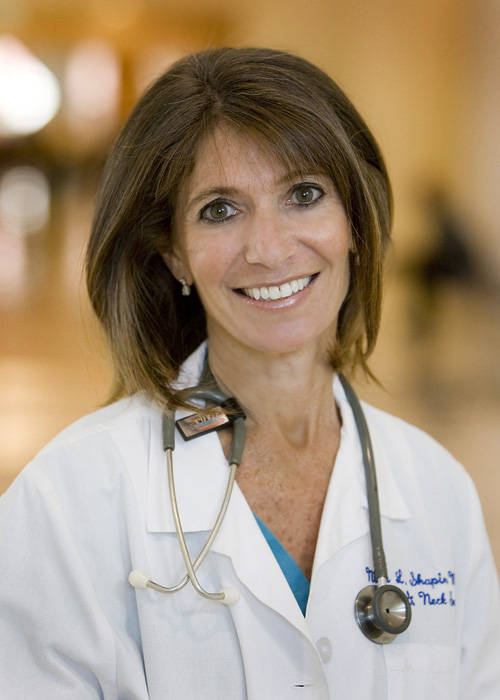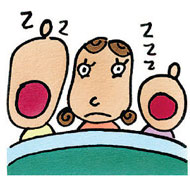Archive for the ‘health’ Category

What to Do When You Can’t Get Pregnant: The Complete Guide to All the TechnologiesFor Couples Facing Fertility Problem
By Daniel A. Potter, MD, FACOG and Jennifer S. Hanin, MA
What to Do When You Can’t Get Pregnant was lauded by Newsweek for guiding readers through the “medical maze” of infertility treatments she it was first released 5 years ago. Now in its second edition (available for pre-order on Amazon and due in bookstores on November 26th), co-authors and AJGpr clients world-renowned fertility expert Daniel A. Potter, MD, FACOG named one of the top reproductive endocrinologists by U. S. World News & World Report and Jennifer S. Hanin, MA, award-winning author, bring the book up-to-date.
Potter and Hanin include significant updates to up your game when trying to get pregnant — up-to-date statistics, proven tips to maximize your fertility, the latest medications, genetic testing like PGS and PDG that give you a head start, revolutionary new procedures for handling your frozen brood (eggs and embryo), hormone replacement, gender selection, and even revolutionary new supplements for infertile men.
To help promote the release of the second edition of What to Do When You Can’t Get Pregnant, AJGpr has booked Potter and Hanin on several radio shows. Listen to Jennifer Hanin on Talk of the Town with Host Dan Collier Boston, MA/Providence, RI (WDIS) and LIVE on the Steve Hexom Show (KBUR).

Host Gil Gross, an award winning radio journalist who has reported the news to millions of Americans and interviewed pop culture icons and heads-of-state alike turned to AJGpr client Dr. Nina Shapiro after reading her Op-Ed in the Los Angeles Times — With fewer vaccinations, is your child’s school safe? Too many parents are seeking excemptions from California’s vaccination law.
This story has legs…

Data shows the anti-vaccination movement spreading to places like Malibu and Boulder — so Salon’s political reporter, Alex Seitz-Wald sought out AJGpr client, Dr. Nina Shapiro for some answers. Here is his article that appeared in Salon.com on Wednesday, August 13. 2013.
You may not immediately peg the woman in yoga pants sipping Kombucha outside Whole Foods as a science-denier, but she might be. The anti-vaccination movement, which posits — in the face of overwhelming empirical research — that vaccines cause autism and other diseases, seems to be picking up steam in many of the country’s wealthier, educated enclaves where parents are interested in living “natural” lifestyles.
“It’s a little bit cool, it’s a little bit of a trend,” says Nina Shapiro, a professor at UCLA medical school and mother of two who wrote an Op-Ed in the Los Angeles Times this weekend about her growing concern with the anti-vax movement.
It’s certainly true of the anti-vaccination’s most prominent voices, like actress Jenny McCarthy, who was just hired to a spot on “The View,” and environmentalist Robert Kennedy Jr.
“It’s that whole natural, BPA-free, hybrid car community that says ‘we’re not going to put chemicals in our children,’” Shapiro told Salon. “It’s that same idea: ‘I’m going to be pure and I want to keep my child pure.’”
California law mandates that all students get vaccinated, but it also makes it easy to get exemptions for personal beliefs. And parents in tony places like Marin County are taking advantage of it in seemingly growing numbers. One public elementary school in Malibu, an affluent beach town just north of Los Angeles, reported that only 58 percent of their students are immunized — well below the recommended 90-plus percent level — according to Shapiro.
And it’s even worse in some of L.A.’s private schools, where as few as 20 percent of kids are vaccinated in some schools. “Yes, that’s right: Parents are willingly paying up to $25,000 a year to schools at which fewer than 1 in 5 kindergartners has been immunized against the pathogens causing such life-threatening illnesses as measles, polio, meningitis and pertussis (more commonly known as whooping cough),” she wrote.
Shapiro’s Op-Ed provoked such heated discussion among the Times’ readers that the Southern California paper devoted a second item just to the reaction.
Joel Stein wrote in Time magazine a few years ago about his disagreement with his wife over vaccinating their children — he wanted to, she didn’t. Her view was “not unique,” he wrote, “at least not in the liberal, wealthy part of L.A. where we live.”
But it’s not just California. Public health officials see large clusters of unvaccinated children in latte-drinking enclaves everywhere, like Ashland, Ore., and Boulder, Colo., where close to 30 percent of children are exempted from one vaccine or another. In some schools in Ashland two-thirds of the students have exemptions, according to Mark Largent, a James Madison College professor who wrote a book about the vaccine debate last year.
And new data out this month from the Centers for Disease Control shows what Paul Offit, a pediatrician at Children’s Hospital of Philadelphia, calls a disturbing uptick in the number of children forgoing vaccinations. “For the first time ever, there are a handful of states which now have people who are choosing not to get vaccines at the greater than 5 percent level, which is a problem. That’s where you’re going to start to see some of these diseases coming back. And you’re already seeing it with whooping cough and other diseases,” he told Salon. Indeed, the anti-vaccination movement was blamed for helping cause the worst whooping cough epidemic in 70 years.
The states above 5 percent include Michigan, Vermont, Idaho and Oregon. Illinois barely missed the cut at 4.8 percent. The national median is 1.8 percent, with many states below 1 percent, making Vermont (5.7 percent) and Oregon (6.4 percent) more than three times above the national average.
Offit, a prominent skeptic of alternative medicine and pro-vaccination author, explained that high education levels can enhance, rather than deter, anti-vax beliefs. “They’re people who believe that they can know anything and know as much as their doctor — if not more — by simply studying it, reading about it,” he said. Many of these people, he added, are used to being in control of their lives and at their jobs and want to control this aspect of their lives as well.
Science writer Chris Mooney has written that vaccine denialism “largely occupies the political left,” though he later walked that back in light of polling data and pushback from Kevin Drum, David Frum, Andrew Sullivan and others, who pointed out that shopping at Whole Foods does not necessarily make you a liberal. And in Congress, the anti-vax movement is represented by Republicans.
And there’s some evidence to suggest that vaccine denialism is gaining strength on the far-out libertarian fringe of the right, where people like Michele Bachmann, Alex Jones and others have spoken out against what they see as a totalitarian mandate from the government to inoculate your children. That might help explain the presence of Idaho on the CDC list, and the fact that the data show the largest increases in non-medical exemptions came from Georgia and West Virginia.

Money can’t buy you love, but a new study suggests lovemaking can earn you money – and not just if you’re employed in the red light district.
MarketWatch reporter Quentin Fottrell and AJGpr client, couples psychotherapist Dr. Fran Walfish join anchor WSJ News Editor, Wendy Bounds on the Wall Street Journal Digital Network live lifestyle show “Lunch Break” to discuss his story about new research on the relationship between sex and money.
Dr. Fran Walfish is the author of The Self-Aware Parent (Palgrave Macmillan).

Infant and Toddler Winter Illnesses
Why do newborns sound so congested? When should you worry about an infant’s cough? Are steroids really needed for a wheezy one year old? Does croup or bronchitis mean a child is more likely to develop asthma? Why do some toddlers have so many ear infections?
Nothing is more distressing to a parent than a young child’s illness. It may feel like one cold is hardly over before the next virus hits, and a cough or runny nose may seem like a chronic occurrence.
On Monday, February 18, 2013 at 12:00 pm EST, Dr. Nina Shapiro, Director of Pediatric Ear, Nose & Throat at UCLA School of Medicine, and the author of Take A Deep Breath: Clear the Air for the Health of Your Child., will explore the common respiratory illnesses encountered during a child’s early years, including colds, sinusitis, ear infection, strep throat, tonsillitis, flu, RSV, pertussis, croup, bronchitis and pneumonia.
She will review the symptoms of these common illnesses with a focus on treatments to manage the symptoms at home and when to worry or call the doctor. Young children typically encounter 5 to 10 colds or viral illnesses a year. The practical information shared by Dr. Shapiro in this webinar will come in handy for parents and caregivers of children from infancy through preschool.
Registration to this free expert speaker webinar is available to all interested parents and caregivers. You may distribute the registration link via email or social media.
Dr. Nina Shapiro on When to Worry About Snoring in Children on Hallmark’s Home and Family
2013

Before the New Year, AJGpr client, Dr. Nina Shapiro, the Director of Pediatric Otolaryngology and an Associate Professor at the David Geffen School of Medicine at UCLA was a guest on the new Hallmark series – Home & Family — the topic — children and snoring. Here’s the clip.
Dr. Shapiro is the author of Take A Deep Breath: Clear the Air for the Health of Your Child.

It’s a New Year – New You! Everyone wants to get in shape and Reuters TV turned to AJGpr client, fitness expert — “Queen of Pilates” — Mari Winsor.
Mari Winsor, one of Hollywood’s most popular Pilates trainers is widely credited with popularizing this once-obscure workout and making it accessible to the public at-large. With the record-breaking and unparalleled success of Mari’s workout series and award-winning infomercials, Winsor Pilates became a household name. Thirty Pilates videos and over 50 million programs sold, later Mari’s groundbreaking dynamic workouts continue to help and inspire people across the country to take care of themselves, look better, live longer, and lead healthy satisfied lives. Today, fans of Pilates can join Mari’s “WINSORFIT CLUB.” For $10 a month, you can work out like a celebrity, in the comfort of your own home. Winsor Pilates comes to you! This first week trial is ONLY $1.
Mari’s studios remain premiere workout centers where one finds a continuous roster of A-list clients building their “core.”

A 2012 study showed that obesity is the most prevalent nutritional disorder among children and adolescents in the United States. Among children ages 2-19, about 1 in 3 are overweight and 1 in 6 are obese. For its 14th season weight loss reality show “The Biggest Loser” is targeting a new demographic: overweight teenagers.
My client, Natalie Digate Muth, MD, MPH, RD – a formerly obese child, a mother of a once-picky eater and a pediatrician is acutely aware of the epidemics of obesity and inactivity in our children. A registered dietician and widely recognized for her expertise in childhood obesity, nutrition, and fitness, Dr. Muth is the author of Eat Your Vegetables! and Other Mistakes Parents Make: Redefining How to Raise Healthy Eaters (April 2012).
Dr. Muth applauds “The Biggest Loser” for drawing attention to the childhood obesity epidemic and making significant changes to the show from the adult version to help avoid exploitation and unintended harm to the children. However, Dr. Muth says “this intervention is unlikely to contribute to meaningful weight management and lifestyle change for these teens in the long-term because arguably the most important factor in a child’s weight management success is mostly absent — the Parents! The parents have played a major role in the child’s onset of obesity and the parents are also the solution. The family is a crucial component that is mostly absent from “The Biggest Loser Childhood Edition,” at least what is portrayed so far. Plus, the parents are the adults who are supposed to be looking out for their kids — if they want to take the risk of letting their kid sink or swim in the spotlight of the American public, then they should be right out there with them. It really should be Family Edition.” Jillian Michaels said, “The focus of the teens’ transformation would be health — not weight or clothing size.” Dr. Muth believes this “healthy approach” starts with the parents.
Recently, Dr. Muth appeared on Yahoo! Shines show Away We Grow to talk about the parents role in combatting childhood obesity. Here is the clip.

AJGpr client, Dr. Nina Shapiro, the Director of Pediatric Otolaryngology and an Associate Professor at the David Geffen School of Medicine at UCLA says snoring can be caused by enlarged tonsils or adenoids that block the airways. If you don’t breathe properly at night, you don’t get enough oxygen to your brain.
Watch the segment on The Doctors here.

My client, Dr. Nina Shapiro, Director of Pediatric Otolaryngology and an Associate Professor at the David Geffen School of Medicine at UCLA has her say about parents choosing or not choosing to vaccinate their kids in a recent blog. Dr. Shapiro is the author of Take A Deep Breath: Clear the Air for the Health of Your Child.
“Nut-free”, “Peanut-free”, and the latest and greatest: “Nut sensitive”. The rage in preschools and elementary schools across the country is to protect our nut-challenged children from nut exposure, even if it means not exposing them to nuts in the same building or playground, to minimize their risk of life-threatening allergic reactions. Allergic concerns have expanded beyond nuts, to gluten and dairy, to the degree that some schools now prohibit ‘powdered cheese products’, to protect children who are especially dairy sensitive. Some schools are not ‘nut-‘ or ‘dairy’-free, but are merely ‘nut’ or ‘dairy’-sensitive. I hope that this means that they take special precautions, beyond just discussing the inner feelings and emotions of those ‘sensitive’ to certain foods.
Please don’t take any of this as sarcasm. I am fully aware that food allergies are bona fide, and when they occur to the point of danger, kids can die, or nearly die, from a severe food reaction. An elementary school girl recently died of a previously undocumented allergic reaction recently, while at school. So an institution’s decision to either ban or, well, ‘sensitize’, potential food allergens, for the greater good, becomes a public health issue, even on the small scale of a school’s microcosm. This is a good thing. By not sending your child to school with their favorite PBJ or cheese puff, you are protecting others. Not necessarily your nut-insensitive child, who happily gobbles powdery cheese products and peanut butter cups in the comfort of your BPA-free hybrid vehicle, but others. Your child’s sacrifice for the greater good is worth it; seeing a small friend go into anaphylactic shock can scar a tyke for life, not to mention the allergic child himself. And this protection of others is important. Equally important is teachers knowing and being re-certified in CPR (which, by the way, might have saved that elementary school girl, had it been initiated before paramedics arrived). Maybe even as important as getting immunized.
Is there a lunch table for the vaccine-sensitive? We promise not to serve nuts. I just wonder if schools would consider instituting ‘vaccine-free’ zones. You know, for the greater good? Just as we are protective of the nut-challenged from life-threatening reactions, what about protecting children from life-threatening illnesses? Public schools can mandate that all must be immunized, but do allow for exemptions, which are pretty easy to get. Many public schools report immunization rates of less than 50% of their students. Private and parochial schools can strongly encourage immunizations, but they cannot mandate that all must be immunized. Some private schools have immunization rates of less than 20%. Yes, that’s right a parent might pay $25,000 a year to a school where less than one in five of their classmates are immunized against life-threatening illnesses such as measles, polio, bacteria which cause meningitis, or pertussis (the one that causes whooping cough). In order for a school to be considered truly immunized, from a public health (or ‘greater good’) standpoint, that particular school’s immunization rate needs to be 90% or higher. Parents have varied reasons, primarily personal, why they choose not to immunize their children. Some parents are concerned about autism risk, even though all of the studies connecting the rise in autism with immunizations have been debunked. Some are concerned that their child’s body is too small to tolerate a large dose of so many vaccines at once, so they spread out the schedule recommended by the American Academy of Pediatrics (AAP) and the Centers for Disease Control (CDC) to create their own ‘tailor-made’ schedule. Some parents think that the illnesses kids are getting immunized against don’t exist anymore, so why bother getting immunized, since illnesses such as polio, measles, mumps, and tetanus have been eradicated anyway.
But here’s the reality: these diseases do exist, and we’re going to see more of them come back. I read about pertussis, the bacterium that causes whooping cough, when I was in medical school. We would learn about this horrible respiratory disease and how it afflicted and took the lives of so many of those poor shlubs from the 1930’s, who hadn’t figure out prevention yet. We would read about them as if they were some primitive Neanderthal tribe, barely able to put two sticks together to make fire. Occasionally a crusty old professor would tell tales of the ‘days of whooping cough’. Ho hum. Well, it’s back. Not so ho-hum anymore. The hundred-day cough, which became an outbreak in California and other states, resulted in many children dying. During the tail end of medical school, I saw H. flu infections, a bacterium that caused severe respiratory illnesses, meningitis, eye infections, and blocked breathing. The miracle of the vaccine for H. flu, which became widely used in 1999, nearly wiped it out. Until now. It’s back, too. Dr. Jonas Salk, the co-creator of the polio vaccine, spoke at my medical school graduation. Polio killed millions, and paralyzed millions more. Thank you, Jonas Salk, and your sidekick Albert Sabin. We haven’t seen polio outbreaks in the U.S. since the 1950’s, when Salk and Sabin’s vaccine began being given widely. Well, we haven’t seen outbreaks yet. We might have to wait until the immunization rates drop some more. But let’s hope not. Polio, whooping cough, meningitis, and measles, to name a few, are still out there – and they could once again be coming to a school near you.


